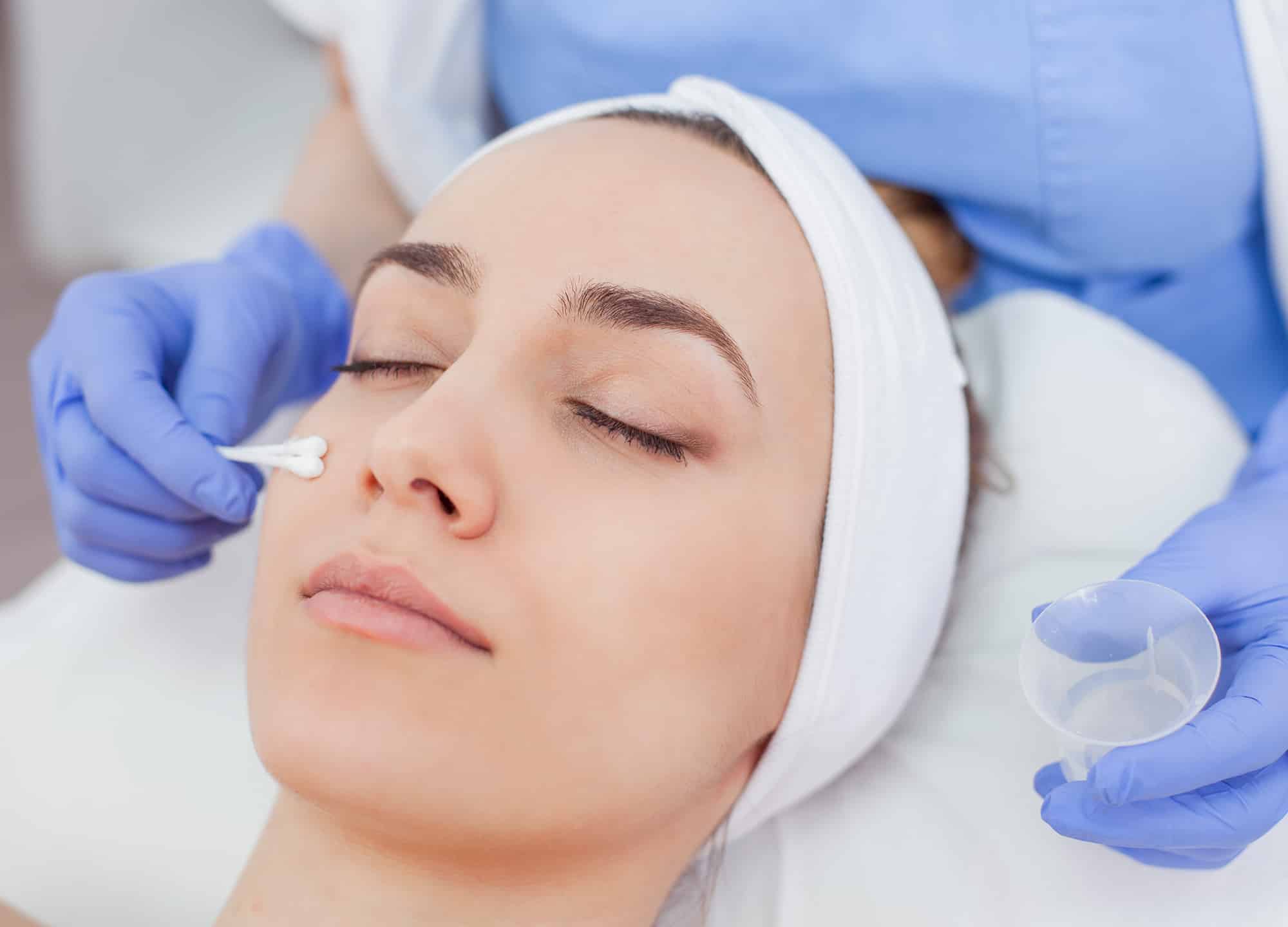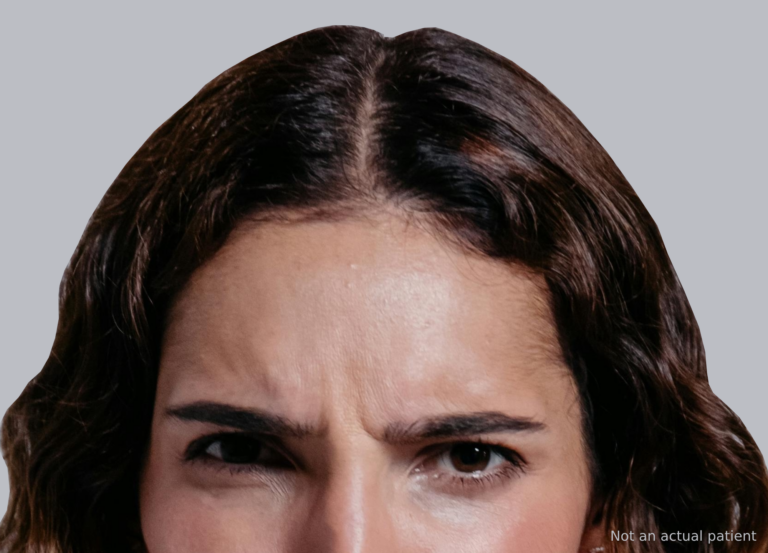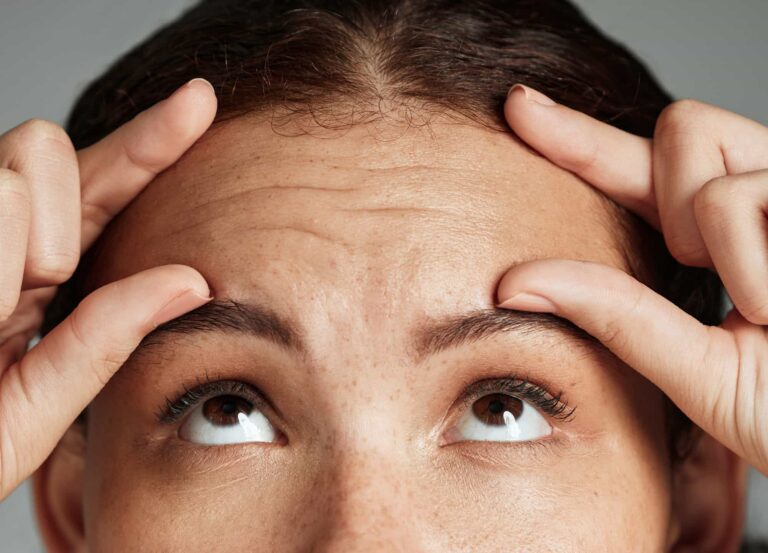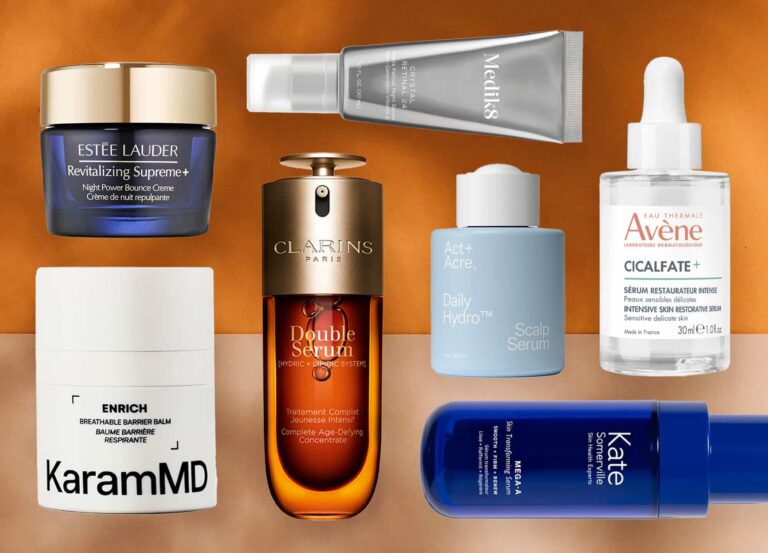Lasers tend to steal the limelight, but chemical peels are another tried-and-true, dermatologist-approved method for fading pigmentation.
“A chemical peel involves the application of different types of chemical solutions to the skin,” explains New York City board-certified dermatologist Dr. Kautilya Shaurya. “These acids interact with proteins to cause peeling and exfoliation.” Different types, combinations, and concentrations of acids result in the skin’s peeling at different depths; there are superficial, medium, and deep-level chemical peels.
Not only are peels more cost-effective than laser treatments (typically a fraction of the price), but because they don’t utilize heat energy, they’re often considered a better line of treatment for pigmentation issues—like sunspots, post-inflammatory hyperpigmentation (the dark marks pimples leave behind), and the notoriously stubborn melasma.
Here’s why: brown pigment, or melanin, is made by melanocytes, skin cells that are easily triggered by both internal and external forces, like hormones, UV light, and—you guessed it—heat. “The melanocyte is a very unstable cell [that] responds to sources of energy, especially heat [and] infrared, to make pigment,” explains Dr. Sameer Bashey, a board-certified dermatologic surgeon with practices in New York City and Los Angeles. Melanocytes register heat and react—they can’t tell if the heat is well-intentioned. So in some patients—particularly those with deep complexions and finicky skin conditions, like melasma—the heat from lasers can actually worsen the very condition they’re aiming to treat.
Related: The Ultimate Guide to Understanding and Treating Melasma
“The beauty of the chemical peel is it suppresses the melanocyte without using heat energy [that could cause rebound pigmentation],” Dr. Bashey says. Overall, he maintains the firm albeit slightly controversial stance that “lasers are not good for pigment. You’re better off using creams and peels.”
Dermatologists can often adjust chemical peels, or even whip up a custom formula, to treat specific skin types, tones, and concerns. Just make sure your provider is proficient in the art of peeling: “It takes a lot of skill to know how to peel somebody properly,” Dr. Bashey says. “Every person is a challenge, because the thickness of the skin is going to impact how the acid takes. The oiliness is going to impact it, your technique and timing are going to impact it—and there’s a higher chance of messing somebody up with a peel.” (Lasers also require expert handling, of course, but Dr. Bashey believes they’re somewhat more programmable than chemical peels.)
Beyond personalized potions, there are a handful of name-brand peels that dermatologists rely on to safely cast off hyperpigmentation. Here, we break down all you need to know about three popular skin-brightening options available at the dermatologist’s office.
1. Cosmelan peel
Best for melasma and general hyperpigmentation, especially in dark skin
Meet the Insta peel of the moment: the Cosmelan, a thick, brown goop that’s superficial to mid-level in strength. The formula contains a blend of azelaic acid, kojic acid, arbutin, phytic acid, and ascorbic acid, says board-certified dermatologist Dr. Sheila Farhang in Tucson, Arizona. “Many of these components are lightening agents, so I consider it more of a lightening tool than a peel.”
There are two components to the Cosmelan, both of which work to stimulate the rate of skin cell turnover and lighten accumulated melanin in the skin. Your practitioner will apply the brown Cosmelan 1 peel in the office and instruct you to leave the mask on your skin for 8 to 12 hours (that’s right: you leave the office with the mask on, then rinse it off at home using a mild cleanser). Two days later, you’ll begin the Cosmelan 2 regimen, applying it once a day for up to one year, to maintain results. The cream is a blend of the same ingredients comprising the pro formula, save for azelaic acid and arbutin.
After the initial in-office treatment, you can expect redness and peeling for up to two weeks and general sensitivity for three weeks or more (during which you should stay out of the sun and keep makeup to a minimum, if possible).
According to RealSelf data, the average cost of the Cosmelan peel is $650 and it has an 82% Worth It Rating.
2. Jessner peel
Best for sun damage and acne
A proprietary blend of salicylic acid, lactic acid, and resorcinol, the Jessner is considered a classic medium-depth peel—although, as with all chemical peels, its intensity can be customized by your provider. “One or two layers achieves a mild to moderate peel,” says board-certified Los Angeles dermatologist Dr. A. David Rahimi in a RealSelf Q&A. “Four to five layers results in a more aggressive peel.”
Compared to many other chemical peels, the “Jessner peel is deeper and more effective,” explains Dr. Shaurya. It’s super-versatile too, offering a solution for countless concerns: “In addition to treating pigmentation [issues], this type of peel is great for acne, acne scars, fine lines and wrinkles, large pores, and sun damage.” In a RealSelf Q&A, Dr. Lenore Sikorski, a board-certified dermatologist in Laguna Niguel, California, describes the Jessner peel as “a reliable, safe peel for rejuvenating sun-damaged skin.”
A stinging or slight burning sensation is normal during the peel, which culminates in frosting—a white coating on the skin signaling that the solution has reached its desired depth. You’ll likely want to pencil in a week of downtime afterward, during which skin may look red and swollen, or, if you went deeper, darken slightly and begin to peel off.
In most cases, you won’t want to wear makeup until peeling has completely resolved (ask your provider for specific post-peel instructions). For optimal results, up to six treatments may be needed at approximately $125 each, according to RealSelf data.
Related: Hyperpigmentation: How 5 Skin Experts Treat Their Own Sun-Related Skin Damage
3.VI Peel
Best for melasma, sun damage, and general hyperpigmentation
“My go-to in-office peel is the VI Peel, which contains phenol [aka carbolic acid], trichloroacetic acid [TCA], salicylic acid, retinoic acid, and vitamin C,” says board-certified New York City dermatologist Dr. Charlotte Birnbaum. “These ingredients help with hyperpigmentation in different ways.” Phenol, retinoid acid, and TCA speed up cell turnover, sloughing off the outermost layer of tarnished skin to reveal fresh cells underneath. Vitamin C suppresses the production of an enzyme required to make melanin.
Typically viewed as a medium-depth peel, the VI “takes a few minutes and only stings a little,” Dr. Birnbaum says. The in-office portion of the peel takes only about 30 minutes; patients are then instructed to rinse off the solution after four hours. “You can expect the most amount of peeling on day three after the peel,” she adds. “So you need to plan accordingly.” Flaking can continue for up to one week.
As with most peels, a series of treatments is usually needed. “Every individual’s response to a VI Peel varies, [and that] influences the number of treatments needed to achieve optimal results. Generally, most patients achieve effective results after two or three treatments,” says board-certified Las Vegas dermatologist Dr. Reuel Aspacio in a RealSelf Q&A. The average cost of the VI peel, according to RealSelf members, is $275.











